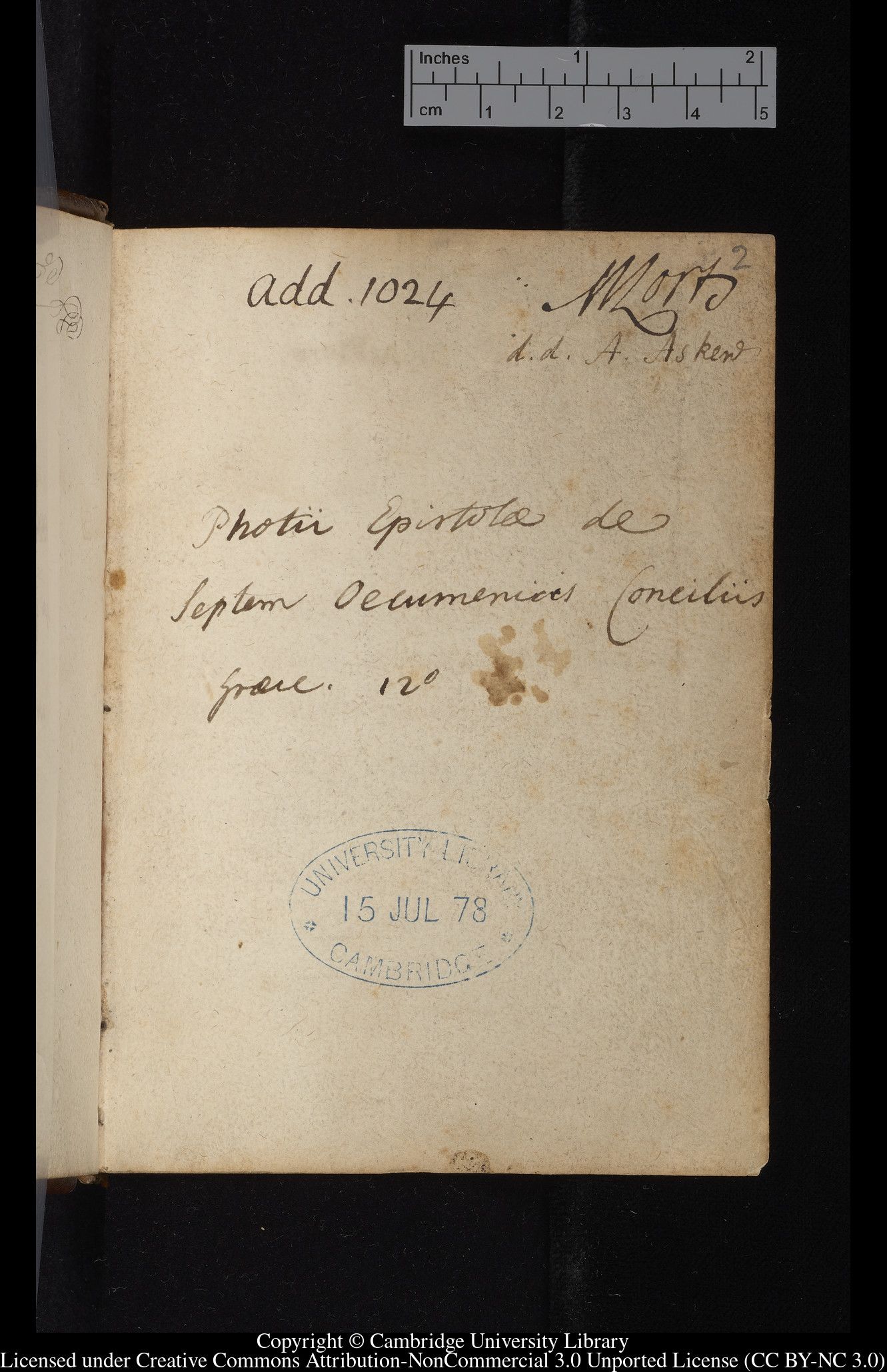Marks of Provenance
How do we know where the manuscripts in
our collections come from?

Provenance: the Life of an Object
Provenance is the history of an object, the story of its life from creation to its current state and location. Provenance research aims to find out about the ownership and use of an object, how it has changed and how it has moved around between different owners and places.
One of the ways in which we find out about the history of an object is through the marks that past owners or users have left on it. Scribes, collectors and readers often wrote in books, leaving their signatures and other annotations. Some intervened in the materiality of the books in more drastic ways, changing the binding, erasing or changing some of the text, or leaving other objects behind. All of those marks are clues that allow researchers to trace the provenance of our manuscripts. This story examines some of the discoveries made by the Polonsky Greek Manuscripts Project cataloguers.

Book Plates and Library Stamps








Trinity College MS B.10.17. The college bookplate.
Trinity College MS B.10.17. The college bookplate.

CUL MS Nn.3.16. Cambridge University Library Bookplate.
CUL MS Nn.3.16. Cambridge University Library Bookplate.

Christ's College MS 9. Christ's College Bookplate.
MS Christ's College 9.2. Christ's College Bookplate.

CUL MS Dd.6.19. Bookplate of the Royal Library (1737).
CUL MS Dd.6.19. Bookplate of the Royal Library (1737).

King's College MS 45. Bookplate of Jonathan Peckover.
King's College MS 45. Bookplate of Jonathan Peckover.

CUL MS Kk.5.12. Claude Sarrau's Coat of Arms on the Bookplate.
CUL MS Kk.5.12. Claude Sarrau's Coat of Arms on the Bookplate.

Christ's College MS Rouse 263. Christ's College Bookplate with Donation Information.
Christ's College MS Rouse 263. Christ's College Bookplate with Donation Information.
Images of BAV Pal. gr.31 and BAV Pal. lat.1950: © Biblioteca Apostolica Vaticana, Images courtesy of BAV and Heidelberg University Library.
All images of Leiden BPG 74 G: © Leiden University Libraries CC BY 4.0.
All images of Corpus Christi College (MS 081): © The Parker Library, Corpus Christi College, Cambridge CC BY-NC 3.0.
Portrait of Henry Hastings, 3rd Earl of Huntingdon, NPG 1574, © National Portrait Gallery, London CC BY-NC-ND 3.0.
Image of Fugger Family Crest: Das Ehrenbuch der Fugger, BSB Cgm 9460, © Bayerische Staatsbibliothek/ Licensed under CC BY-NC-SA 4.0.
Niketas Lychnos seal: © Dumbarton Oaks, Byzantine Collection, Washington, DC.
Portrait of Don Gaspar de Guzmán (1587–1645), Count-Duke of Olivares, ca. 1636 or later. Attributed to Velázquez (Diego Rodríguez de Silva y Velázquez), The Metropolitan Museum of Art, New York, CC0 1.0.
All other images: © Cambridge University Library/Licensed under CC-BY-NC 3.0.



